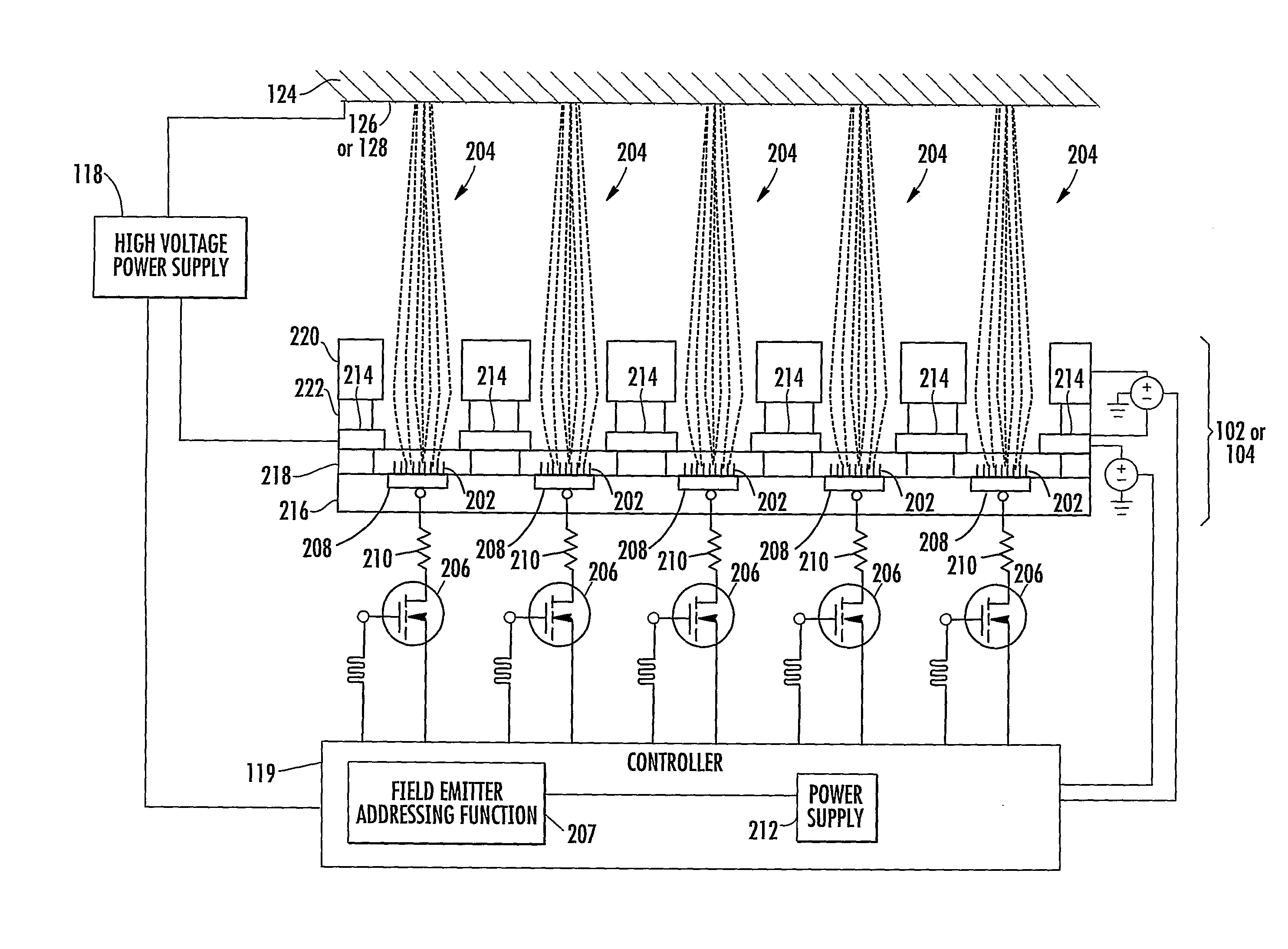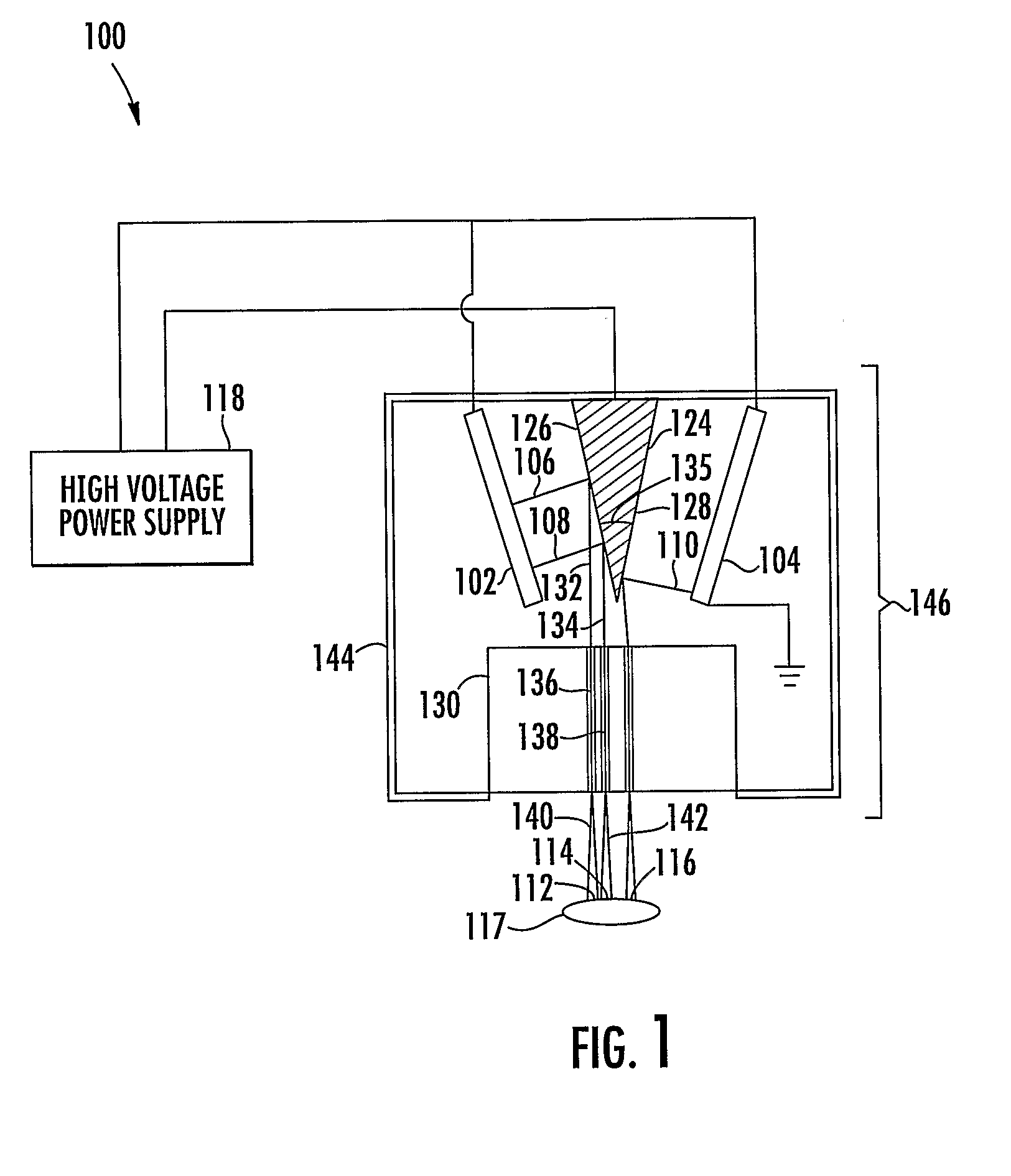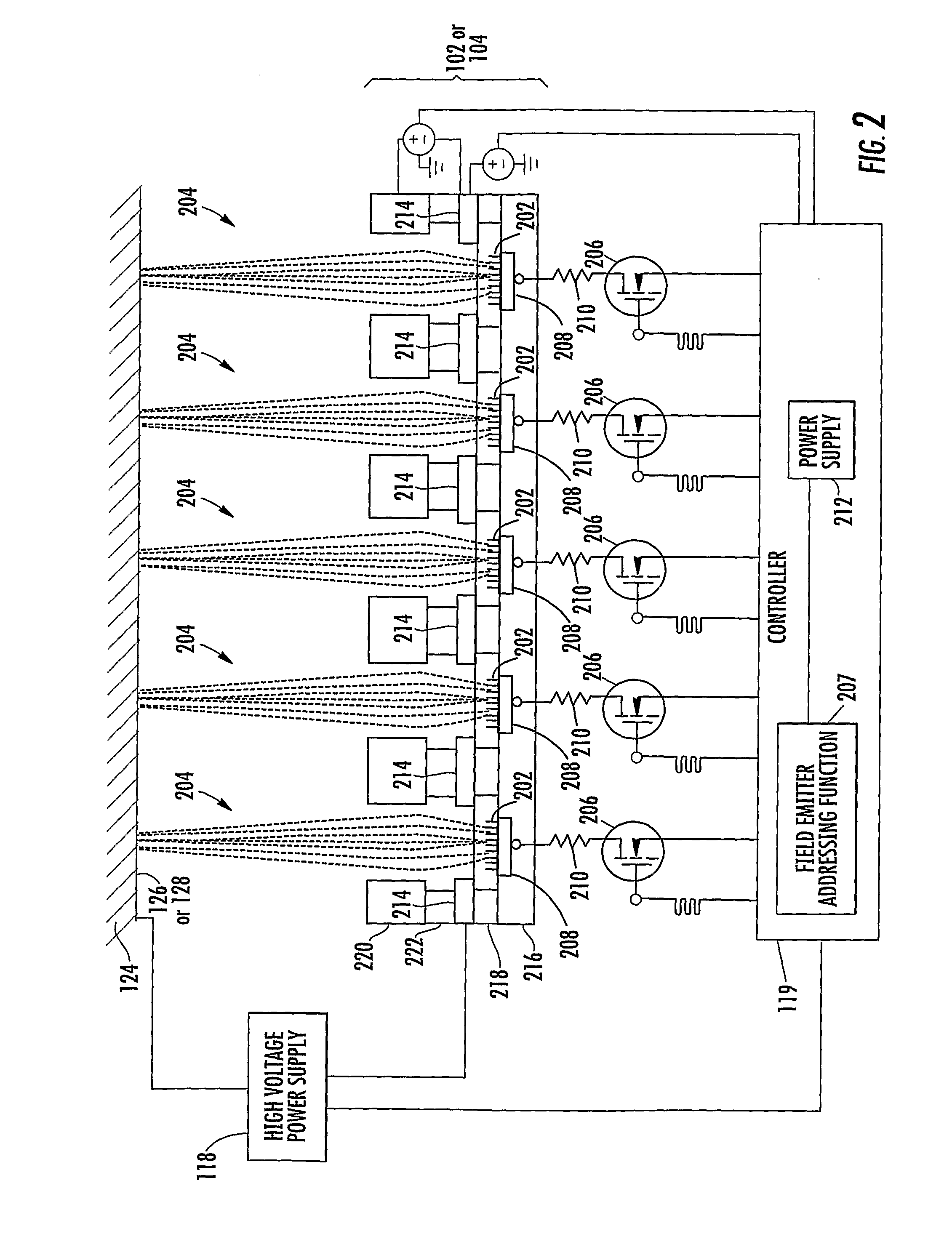X-ray pixel beam array systems and methods for electronically shaping radiation fields and modulation radiation field intensity patterns for radiotherapy
a radiation field and intensity modulation technology, applied in the field of x-ray radiotherapy treatment, can solve the problems of age-adjusted cancer death rate in the united states that has not shown a corresponding improvement, tumors created from established cell lines implanted into non-native sites can respond differently, and the effect of radiation field intensity modulation
- Summary
- Abstract
- Description
- Claims
- Application Information
AI Technical Summary
Benefits of technology
Problems solved by technology
Method used
Image
Examples
Embodiment Construction
[0039]In accordance with the present disclosure, x-ray pixel array systems and related methods are provided. The systems and methods described herein may have particular application for use in electronically shaping radiation field and modulating radiation intensity pattern for subject irradiation. CT imaging and radiotherapy (RT) treatment are exemplary uses of the systems and methods described herein. In particular, the systems and methods described herein may be used for delivering radiation to animals in a pre-clinical setting and / or humans in a clinical setting.
[0040]For a pre-clinical application, an x-ray pixel array system according to the present disclosure may include a plurality of addressable electron field emitters operable to emit a plurality of electron pixel beams. Further, an x-ray pixel array system according to the present disclosure may include an anode positioned to accelerate electrons in the electron pixel beams and to convert a portion of energy associated wi...
PUM
| Property | Measurement | Unit |
|---|---|---|
| voltage | aaaaa | aaaaa |
| energy | aaaaa | aaaaa |
| energy | aaaaa | aaaaa |
Abstract
Description
Claims
Application Information
 Login to View More
Login to View More - R&D
- Intellectual Property
- Life Sciences
- Materials
- Tech Scout
- Unparalleled Data Quality
- Higher Quality Content
- 60% Fewer Hallucinations
Browse by: Latest US Patents, China's latest patents, Technical Efficacy Thesaurus, Application Domain, Technology Topic, Popular Technical Reports.
© 2025 PatSnap. All rights reserved.Legal|Privacy policy|Modern Slavery Act Transparency Statement|Sitemap|About US| Contact US: help@patsnap.com



